
Wisdom-Trek / Creating a Legacy
Welcome to Day 933 of our Wisdom-Trek, and thank you for joining me.
This is Guthrie Chamberlain, Your Guide to Wisdom
The Enneagram System – The Wings and Levels of Development – Ask Gramps
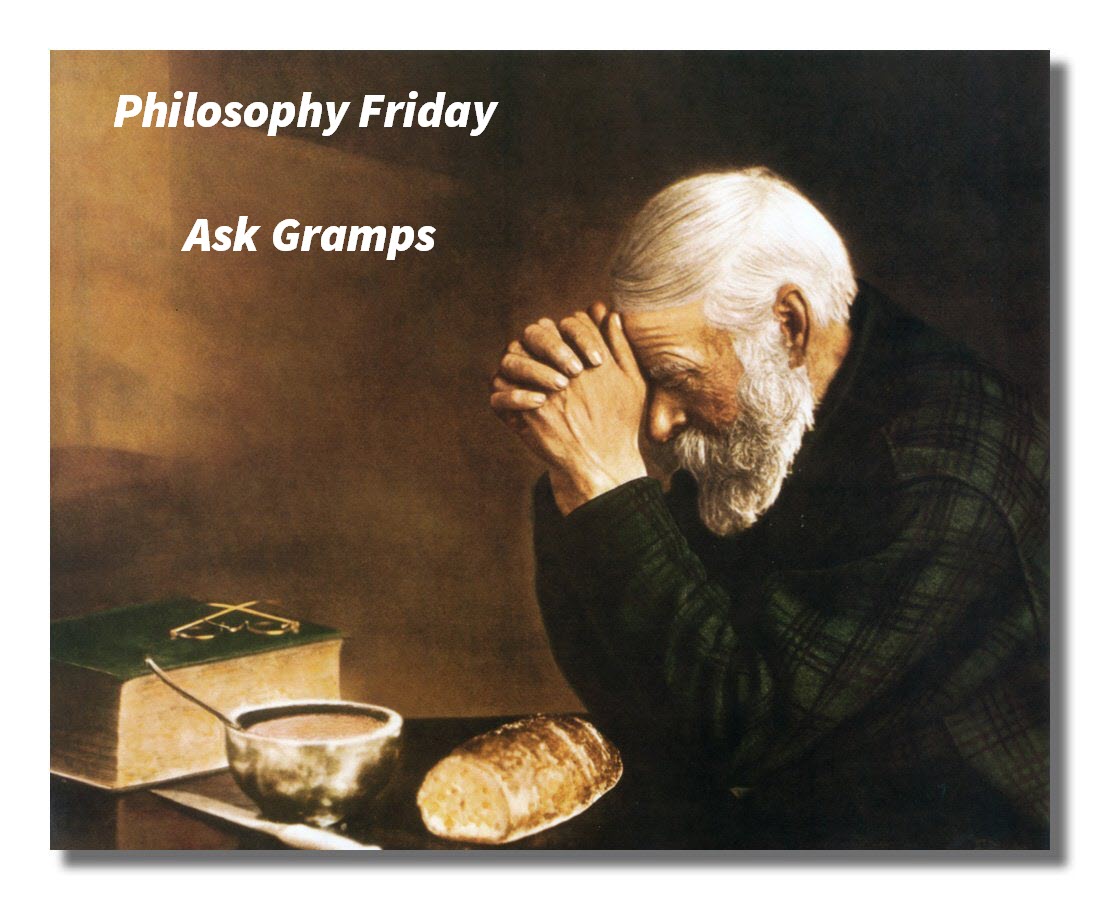
We are broadcasting from our studio at The Big House in Marietta, Ohio. Thank you for joining us for our five days per week wisdom and legacy building podcast. This is Day 933 of our trek and time for our Philosophy Friday series.
Each Friday we ponder some of the basic truths and mysteries of life and how they can impact us in creating our living legacy. As we continue on this trek called life, sometimes we have questions about life, so our Friday trek is a time when we can “Ask Gramps.” Gramps will answer questions that you would like to ask your dad or granddad, but for whatever reason, you are not able to. No matter how old we are, I know that all of us would like the opportunity to ask dad or gramps questions about life in many areas.
Today is the fourth episode in a new series delving into what makes each of us respond as we do to life situations. Understanding ourselves and how others may interpret life through their paradigm will allow us to interact with each other with more love and compassion. We began with an overview of the Enneagram specifically from a Biblically-based perspective. We then looked at how the Enneagram system works. Last week we explored the aspects of why the enneagram is such a powerful tool in understanding yourself a little deeper and how it can help you to understand others that you interact with and impact.
Today we will explore what is referred to as “wings” which are the numbers on either side of your predominate personality style. If you have missed any of our past three Friday series, I would recommend going back to listen to them or read the Wisdom Journals.
As a review, the tool that we refer to as the Enneagram (Any-a-Gram) is a circle with 9 interconnected points (Ennea refers to 9 and Gram refers to a drawing). Check out representation of it below. I have also included a copy of “The Enneagram At-A-Glance” today, which was compiled by Suzanne H Eller.
If you would like me to send you a PDF copy click on this link. I would also recommend a recently released book The Road Back to You written by Ian Morgan Cron and Suzanne Stabile. It is an excellent book about an enneagram journey to self-discovery.
When I discovered the depth of the Enneagram, it opened up a new horizon of understanding of myself first and has also helped me to understand others better. The Enneagram is the most useful tool of this type I’ve encountered for personal growth. Keep in mind, though, it is still only a tool and cannot replace or usurp the precepts that are found in God’s word.
So the questions for the next several week or months will be…
“Hey, Gramps, why do people act and react to situations and circumstances in life differently? How can I gain wisdom to better understand myself and others so that I can love, serve, and minister to them on a deeper level?”
The Enneagram System – The Wings and Levels of Development
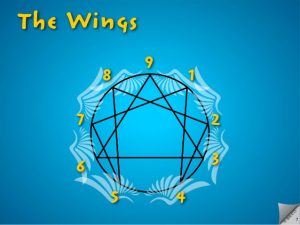
-
The Wing
No one is a pure personality type. Everyone is a unique mixture of his or her basic type and usually one of the two types adjacent to it on the circumference of the Enneagram. One of the two types adjacent to your basic type is called your wing.
Your basic type dominates your overall personality while the wing complements it and adds important, sometimes contradictory, elements to your total personality. Your wing is the “second side” of your personality, and it must be taken into consideration to better understand yourself or someone else.
For example, if you are a personality type Nine, you will likely have either a One-wing or an Eight-wing, and your personality as a whole can best be understood by considering the traits of the Nine as they uniquely blend with the traits of either the One or the Eight. This is what the experts in the Enneagram have experienced over the years. They have also encountered some individuals who seem to have both wings while others are strongly influenced by their basic type and show little of either wing.
There is disagreement among the various traditions of the Enneagram about whether individuals have one or two wings. Strictly speaking, everyone has two wings—in the restricted sense that both of the types adjacent to your basic type are operative in your personality since each person possesses the potentials of all nine types. However, this is not what is usually meant by “having two wings,” and proponents of the so-called two-wing theory believe that both wings operate more or less equally in everyone’s personality. (For example, they believe that a Nine would have roughly equal amounts of his or her Eight and One wings.)
Observation of people leads me to conclude that while the two-wing theory applies to some individuals, most people have a dominant wing. In the vast majority of people, while the so-called second wing always remains operative to some degree, the dominant wing is far more important. (For example, Twos with Three wings are noticeably different from Twos with One wings, and while Twos with Three wings have a One wing, it is not nearly as important as the Three wing.)
It is, therefore, clearer to refer simply to a type’s “wing” as opposed to its “dominant wing,” since the two terms represent the same concept. There are a few individuals that do not have a strong wing at all because their primary personality type is so strong.
One other observation about wings is worth mentioning. In the course of studying the Enneagram through books, workshops, or training, many people in the latter half of their lives have reported the development of their so-called “second wing.” This is due to the fact that if we mature in a healthy manner, we tend to have fewer extremes in our lives.
In individuals who have been pursuing psychological and/or spiritual work, there appears to be more evidence that both wings are incorporated into their primary personality number. It is not clear, however, whether these students were merely seeing all of the positive potentials of the nine types unfolding in them as they matured—their second wing being one of the other seven types—or whether this was a specific development of the second wing type.
It is, of course, necessary to identify your basic type before you can assess which wing you have. In subsequent weeks, we will cover in detail the full descriptions of your type and its wings to more closely determine your Personality Types. You can also consider the descriptions of the two types adjacent to your basic type and decide which best applies to you, if either.
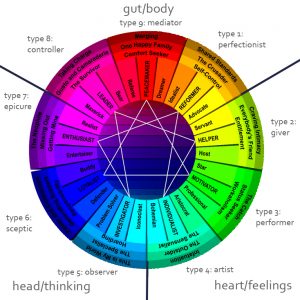
-
The Levels of Development
There is an internal structure within each personality type. That structure is the continuum of behaviors, attitudes, defenses, and motivations formed by the nine Levels of Development which make up the personality type itself. The exploration of these nine levels within the nine personality types (and the working out of all the traits that comprise each type) was originally begun by Don Riso in 1977, and was further developed by Don Riso with Russ Hudson in the 1990s. Their book Personality Types: Using the Enneagram for Self-Discovery is another good resource although they do not present the traits from a specifically Christian viewpoint.
Riso and Hudson were the first Enneagram teachers to include this important factor in their treatment of the Enneagram. The Levels are an important contribution not only to the Enneagram but to ego psychology—and the personality types of the Enneagram cannot be adequately explained without them. The Levels account for differences between people of the same type as well as how people change both for better or worse. Thus, they can also help therapists and counselors pinpoint what is actually going on with clients and suggest solutions to the problems they are having.
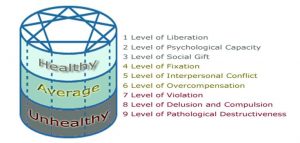
The Levels of Development provide a framework for seeing how all of the different traits that comprise each type fit into a large whole; they are a way of conceptualizing the underlying “skeletal” structure of each type. Without the Levels, the types can seem to be an arbitrary collection of unrelated traits, with contradictory behaviors and attitudes often part of the picture. By understanding the Levels for each type, one can see how all of the traits are interrelated—and how healthy traits can deteriorate into average traits and possibly into unhealthy ones.
As pioneering consciousness philosopher Ken Wilber has noted, without the Levels, the Enneagram is reduced to a “horizontal” set of nine discrete categories. By including the Levels, however, a “vertical” dimension is added that not only reflects the complexity of human nature but goes far in explaining many different, important elements within your personality.
Further, with the Levels, a dynamic element is introduced that reflects the changing nature of the personality patterns themselves. You have probably noticed that people change constantly—sometimes they are clearer, freer, more grounded, and more emotionally available while at other times they are more anxious, resistant, reactive, emotionally volatile, and less free. Understanding the Levels makes it clear that when people change states within their personality, they are shifting within the spectrum of motivations, traits, and defenses that make up their personality type.
To understand an individual accurately, it is necessary to perceive where the person lies along the continuum of Levels of his or her type at a given time. In other words, one must assess whether a person is in their healthy, average, or unhealthy range of functioning. This is important because, for example, two people of the same personality type and wing will differ significantly if one is healthy and the other unhealthy. (Spiritually, in relationships, and in the business world, understanding this distinction is crucial.)
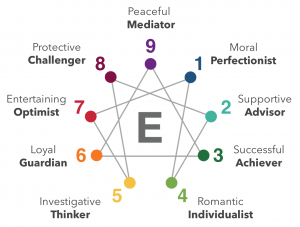
Next Friday we will explore the Continuum of the Levels of Development more in-depth to learn how they are crucial in understanding ourselves and other more fully.
While the Enneagram is a powerful tool to help us understand ourselves better and also understand the perspective of others better, ultimately it should drive us to have more love and compassion both for ourselves and others. As we are encouraged in Philippians 2:1-2, “Is there any encouragement from belonging to Christ? Any comfort from His love? Any fellowship together with the Spirit? Are your hearts tender and compassionate? Then make me truly happy by agreeing wholeheartedly with each other, loving one another, and working together with one mind and purpose.”
Join us again next Friday as we further explore the Enneagram on our Ask Gramps episode. The information that we explore will allow you to unlock who you are as we travel on our trek of life and discover more about yourself and others as you impact God’s kingdom. I know you will find these insights interesting, practical, and profitable in living a rich and satisfying life.
Our next trek is Mediation Monday when we will help you reflect on what is most important in life. So encourage your friends and family to join us and then come along on Monday for another day of our Wisdom-Trek, Creating a Legacy.
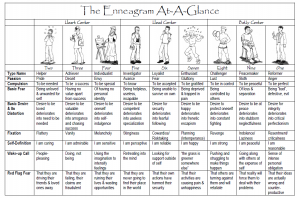
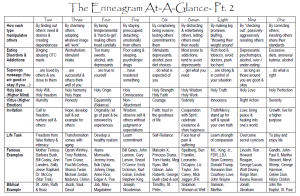
If you would like a full PDF copy of The Enneagram At-A-Glance, click on the link above these graphics.
If you would like to listen to any of the past 932 daily treks or read the associated journals, they are all available at Wisdom-Trek.com. I encourage you to subscribe to Apple Podcast or Google Play so that each day’s trek will be downloaded automatically.
Thank you for allowing me to be your guide, mentor, and most of all your friend as I serve you through the Wisdom-Trek podcast and journal.
As we take this trek together, let us always:
- Live Abundantly (Fully)
- Love Unconditionally
- Listen Intentionally
- Learn Continuously
- Lend to others Generously
- Lead with Integrity
- Leave a Living Legacy Each Day
I am Guthrie Chamberlain reminding you to Keep Moving Forward, Enjoy Your Journey, and Create a Great Day Everyday! See you on Monday!
Leave a Reply